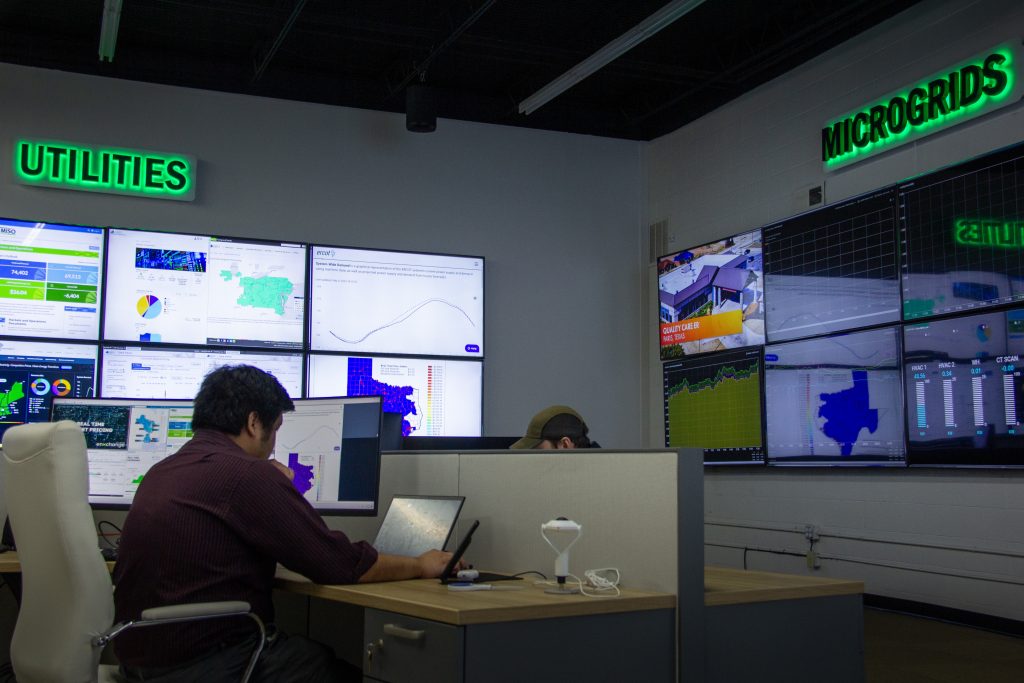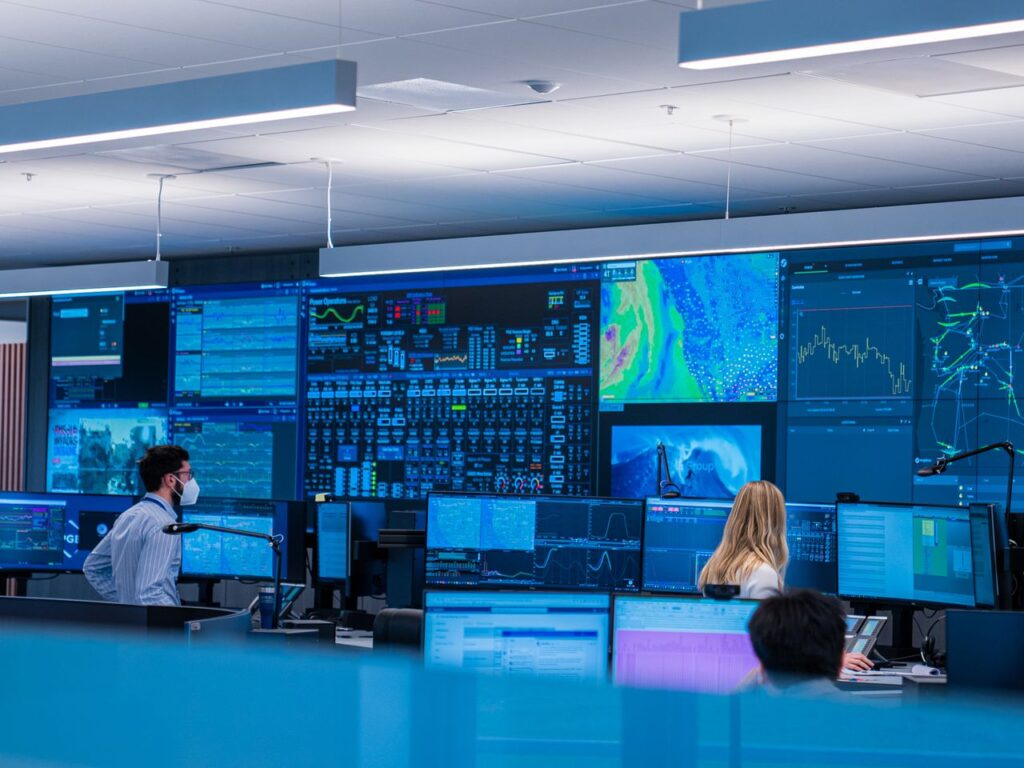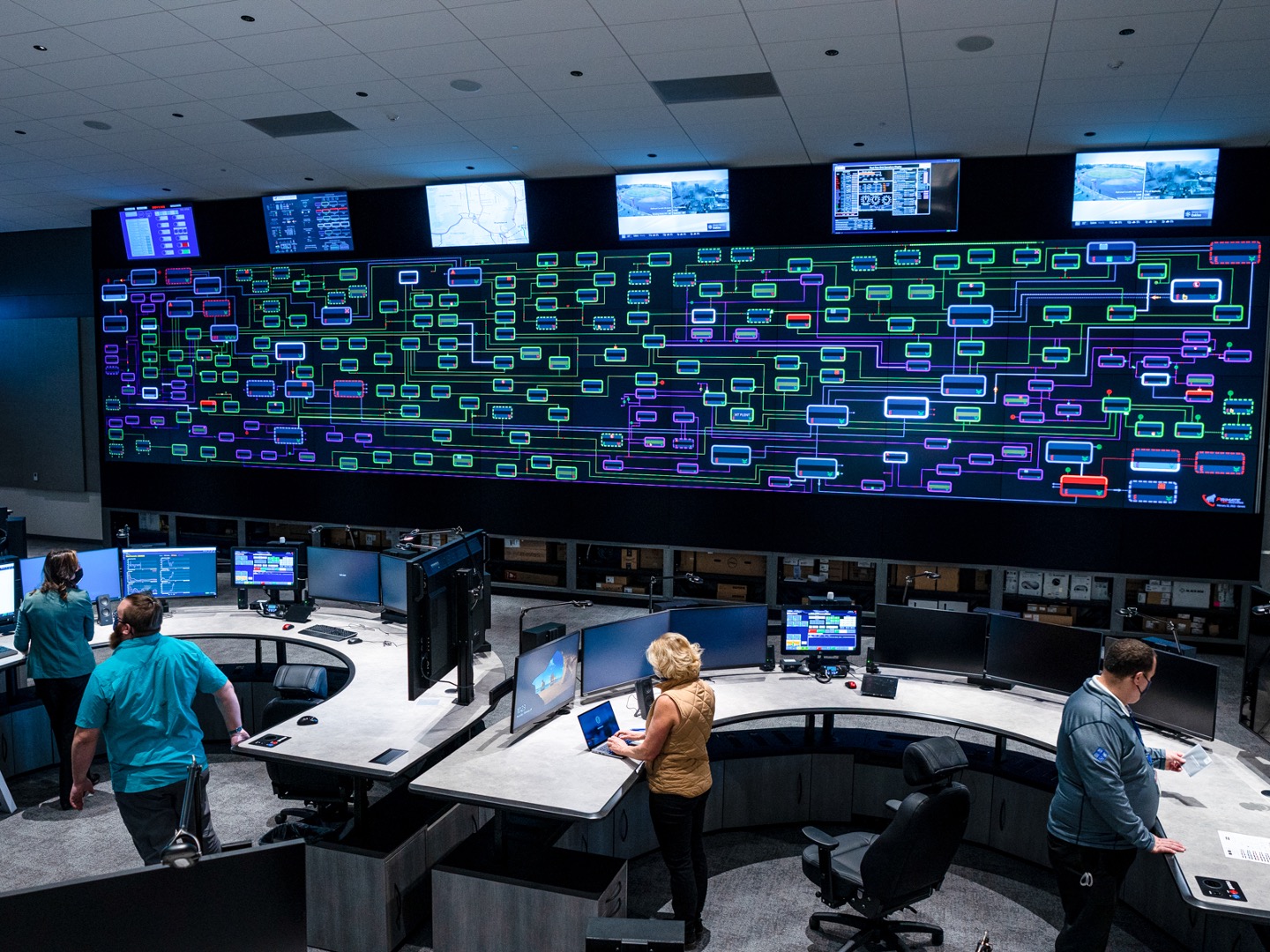In the dynamic landscape of energy and utility management, the evolution from map boards to SCADA to today’s cutting-edge Energy Management Systems (EMS) marks a transformative journey. For its time, advanced electronics and 3-digit LED indicators on system boards characterized state-of-the-art in the 60’s, as the concept of a comprehensive EMS began to take shape.
Fast forward to the present, where these control rooms harness technology that renders the sheer volume of data insurmountable. This technical leap empowers energy and utility companies to revolutionize their operations through:
Distributed Energy Resource Management

As in other industries, data analytics has become essential to the energy sector allowing controllers to predict usage patterns and balance loads to optimize power generation investments. The challenges posed by extreme weather, unpredictable energy consumption, and the surge in electric vehicle usage are met with Distributed Energy Resource Management (DERM) systems that ensure much greater uptime and value for utility customers. By managing generation and distribution across diverse sources like power plants, wind turbines, solar panels, and more, DERMs reduce outage frequency, ensure resilience, and provide predictive modeling to lessen the impact of catastrophic events.
Microgrids as Non-Wire Alternatives

Microgrids, heralded as Non-Wire Alternatives (NWAs), have emerged as solutions to utility congestion challenges and the aging infrastructure of fossil fuel plants. An intelligent microgrid controller utilizes data to determine optimal energy consumption, production, storage, or sale times based on weather conditions, predicted utility rates, and other factors. Serving as decentralized power plants, microgrids complement existing grids, swiftly responding to community constraints during extreme events such as storms, fires, and high temperatures, preventing outages. Increasing focus on critical infrastructure protection has made microgrids a preferred model for continuity of operations across industries.
Security Vigilance

Threats to today’s energy sector often take the form of hybrid attacks against both physical and cyber assets. As utility enterprises have pioneered the deployment of IoT devices to deliver critical metrics, these have created an increasingly interconnected cyber-physical security (CPS) mesh. This phenomenon increases the threat surface and obscures the boundary between cybersecurity and physical security. In fact, it’s not uncommon for state actors to unleash cyber-attacks aimed at physical security controls.
According to Gartner, “Liability for cyber-physical security incidents will pierce the corporate veil to personal liability for 75% of CEOs by 2024. Due to the nature of cyber-physical systems (CPSs), incidents can quickly lead to physical harm to people, destruction of property or environmental disasters. Gartner analysts predict that incidents will rapidly increase in the coming years due to a lack of security focus and spending currently aligning to these assets.”
The model for Security Operations Centers (SOCs) now includes requirements for dynamic layouts and visual spaces that consume and analyze both physical and cyber security data. Modern command center platforms don’t just provide a global common operating picture (COP), they also interact directly with alerts surfaced by security applications to automatically direct the focus of human operators. It’s not unusual in today’s SOC environment to see cyber applications aligned side-by-side with a camera-sourced Visual Management System (VMS) augmented by AI-based detection features.
The Integrated Operations Center

The role of utility operations teams is changing, within a fast-evolving environment where interconnected systems and flexibility of operations are now at the forefront. To adjust, forward-thinking utilities are making more use of their secure internal networks and erasing the barriers between traditionally siloed operations centers. Once-dedicated rooms are now conceived with multiple uses in mind, where the information needed for crisis management or emergency operations can easily replace operational SCADA and dashboards, should the need arise. And operations can now be conducted across dedicated command centers as well as laptops and other devices in remote locations – securely and without interruption.
Conclusion
The consolidation of technology and data not only transformed, but revolutionized, the energy and utility industry. Companies now wield the power to enhance operation efficiency, make informed decisions, and manage risks to maximize both consumer satisfaction and profitability.
In the past, utilities and energy companies wrestled with the daunting task of acquiring and integrating data from siloed data sources. Technology has now allowed operations to evolve from data gathering to adept data management – a crucial shift if utilities are to meet demands of an expanding population while adapting to myriad threats and disruptions. Thankfully, control room personnel can now navigate a comprehensive operations landscape, empowering them to deftly handle incoming information, distinguish signal from noise, and swiftly respond to outages and incidents with unparalleled efficiency.
Activu vis/ability is recognized as the leader in Utility control room operations centers, video walls, and collaboration. We bring unparalleled insight to the table. The vis/ability platform provides an active-active recovery and remote backup redundancy ensuring uninterrupted operations even during crisis situations. Our solutions display content from any SCADA, dashboard, or camera system, onto video walls, in conference rooms, workstations, and remote devices. Also, vis/ability is a NERC/CIP certified video wall and collaboration platform, made in the USA by Activu, an ISO 27001 certified developer, and is a, making it the preferred choice for some of the most highly secure facilities in the U.S. government.
Are you looking to enhance your control room? Schedule a demo with Activu today.

